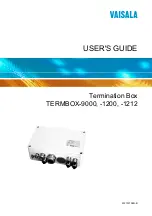
32
Figure 8 Two-bucket structure
shows the two-bucket structure. CBS is implemented with bucket C, and EBS with bucket E.
In each evaluation, packets are measured against the following bucket scenarios:
•
If bucket C has enough tokens, packets are colored green.
•
If bucket C does not have enough tokens but bucket E has enough tokens, packets are colored
yellow.
•
If neither bucket C nor bucket E has sufficient tokens, packets are colored red.
Traffic policing
Traffic policing supports policing the inbound traffic and the outbound traffic.
A typical application of traffic policing is to supervise the specification of certain traffic entering a
network and limit it within a reasonable range, or to "discipline" the extra traffic to prevent aggressive
use of network resources by a certain application. For example, you can limit bandwidth for HTTP
packets to less than 50% of the total. If the traffic of a certain session exceeds the limit, traffic policing
can drop the packets or reset the IP precedence of the packets.
shows an example of
policing outbound traffic on an interface.
Figure 9 Traffic policing
Traffic policing is widely used in policing traffic entering the networks of ISPs. It can classify the
policed traffic and take predefined policing actions on each packet depending on the evaluation
result:
•
Forwarding the packet if the evaluation result is "conforming."
•
Dropping the packet if the evaluation result is "excess."
•
Forwarding the packet with its IP precedence re-marked if the evaluation result is "conforming."
•
Delivering the packet to next-level traffic policing with its IP precedence re-marked if the
evaluation result is "conforming."
















































